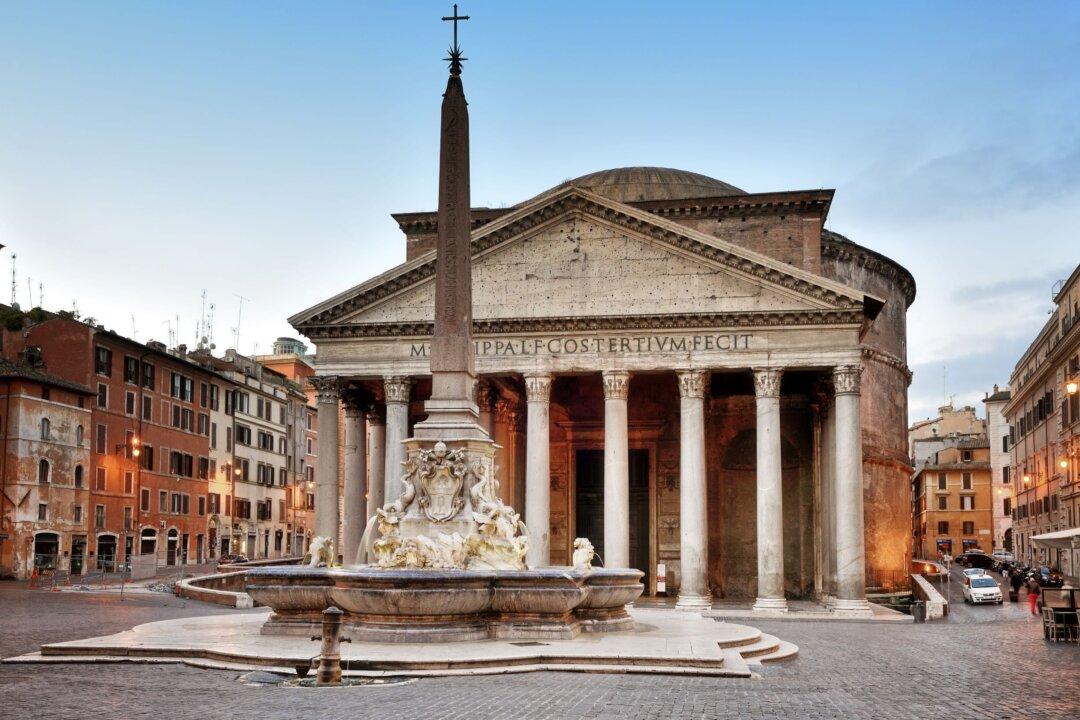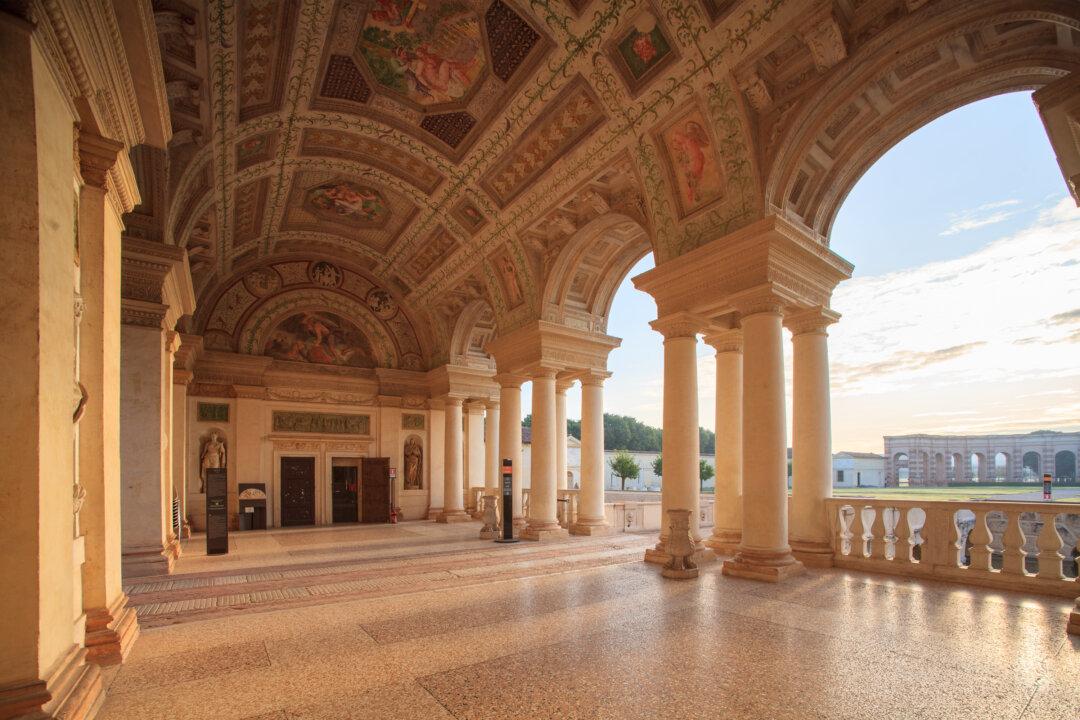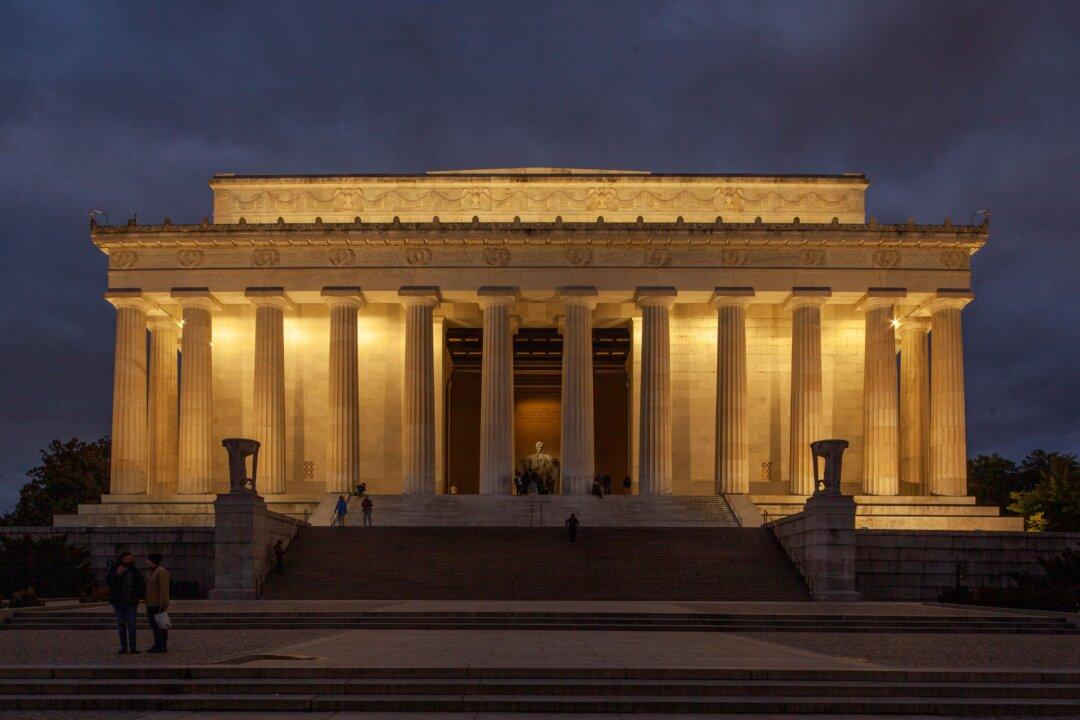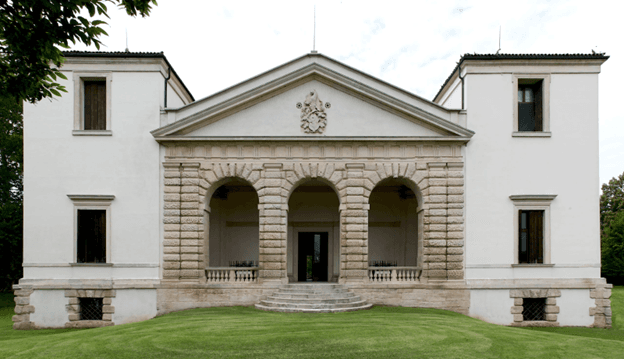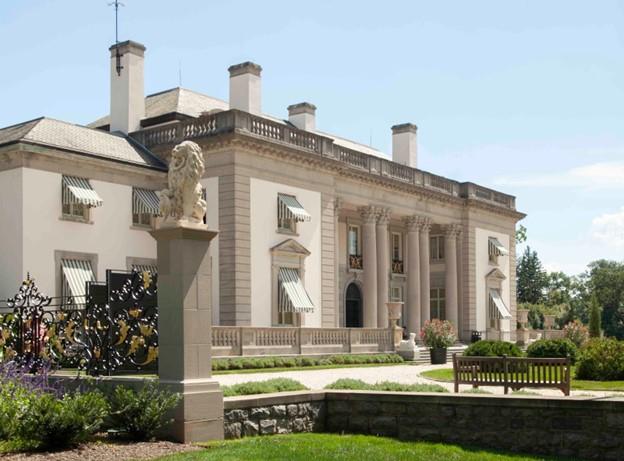The Pantheon has held an empowering effect on the individual and humanity for nearly 2,000 years and stands as one of the most significant classical buildings in history. It was built by Emperor Hadrian in the second century and is located in the Piazza della Rotonda, a city square in the center of Rome.
The size of the interior space is awe-inspiring. Columns line the room with blind doorways and niches. A second story of blind windows seemingly connects to spaces beyond, giving a sense of being surrounded by buildings in a town piazza, rather than an interior space.

